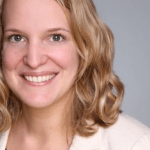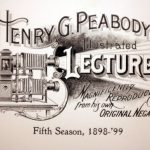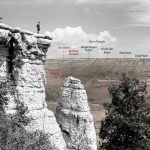
Digital humanists are thinking hard about the shape of their discipline and ways to engage their student and faculty communities in digital research. I’m pleased to have the opportunity to add to the conversation from the perspective of an editor at an academic press.
Stanford Press has recently begun to build a publishing program in the digital humanities and social sciences. Thanks to a generous grant from the Mellon Foundation, we are able to offer digital humanists and social scientists accreditation for their work along the same lines as they receive for their print publications. This effort not only supports scholars in getting their work acknowledged as publications by tenure committees, it also ensures that their work is integrated into the ecosystem of scholarly communication, otherwise known as journal and monograph publishing. While universities and societies are beginning to develop impressive guidelines for assessing digital scholarship, these efforts currently don’t increase the visibility of exemplary projects. As publishers, we offer[pullquote1 align=”left”]Mapping [digital scholarship] onto the structures of the academic publishing industry poses diverse challenges.[/pullquote1]professional development, production, and marketing of digital scholarship to polish and position it to its best advantage. In the long run, we hope that the standards and methods we develop for publishing digital projects will serve as templates for digital publishing that “other presses can emulate, adopt or adapt.”
Because digital scholarship departs in significant ways from print scholarship, mapping it onto the structures of the academic publishing industry poses diverse challenges. The first year of our experiment has shown that authors and publishers alike benefit from the exchange by collectively pushing the boundaries of scholarly communication in the 21st century. As editors, we guide the development of any project, whether print or digital, by conducting peer review and honing the concept and structure of a project’s argument. For digital projects, that means not only editing text, but also visual languages, and technological solutions. Authors of digital projects come to us with a wide range of questions, but one that comes up often enough to merit being addressed here is the one about our involvement in the technical development of a project. In other words, do we have developers that can build the platforms authors need to present their arguments? The answer is, we don’t. Not only do the impressive efforts underway at academic libraries around the country show that other players on the academic field are already there to assist authors, we also firmly believe that the process of building digital projects is inherent to the author’s creative process, it is part of the “writing” of digital communication, and we as academic publishers should not create but rather edit, produce, and market it.
Projects we work on use nonlinear approaches to analyze and interpret material[pullquote1 align=”right”]We… firmly believe that the process of building digital projects is inherent to the author’s creative process.[/pullquote1] such as photographs, audio and video, objects, artifacts, geographic and demographic data sets, or large text corpora. The resulting publications build arguments that, simply put, can’t be flattened onto a page. In other words, the novelty of this kind of scholarship is not necessarily the objects it studies but the method of presenting its findings. For instance, our pilot project dynamically links photographs, narratives, and GIS-enriched maps of the Grand Canyon to allow readers to delve into the historical and cultural spaces of this iconic landmark of the American West. The three dimensions of investigating this space each allow different questions to be asked and answered, thereby opening up the Grand Canyon not as one place, but as myriad places with deep cultural, geological, and geographic histories.
The second project we have signed is built on a database of audio and video recordings of poetic performances in Mahri (also spelled Mehri), a language without a writing system. The author uses this corpus of oral art, a central form of aesthetic expression for the Mahra, to identify a set of parameters that allows the poems to be systematized independently of their genre. By moving away from genre-based categorization, the author is able to expand the corpus to include quotidian poetic acts, which have traditionally been ignored by scholars. The digital project emphasizes the absence of hierarchy and value judgment of different types of poetry by offering a nonlinear approach to the material via the author’s set of parameters.
With these two projects under contract, we are beginning to build a diverse list intended to represent the digital humanities and social sciences broadly. Other projects we are currently considering run the gamut from digitally reengineering historical physical artifacts to reconstructing and analyzing crowdsourcing networks to visualizing policies’ effects on human geography. While all of the projects are diverse in method and discipline, they are tied together by their use of web technology to not only conduct research but also to present theses. Excluded from this list are projects whose goal it is to develop tools or projects that use web technology to conduct research, but where the results can easily be presented in print. By bringing our professional expertise in publishing to bear on the final products, we aim to strengthen the communities we are engaged in: digital humanities and social sciences, the humanities and social sciences at large, and scholarly publishing.


